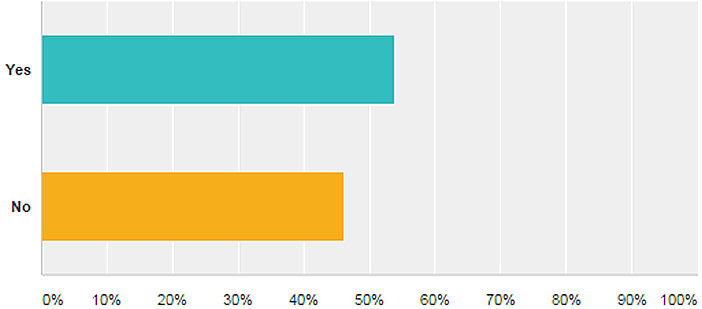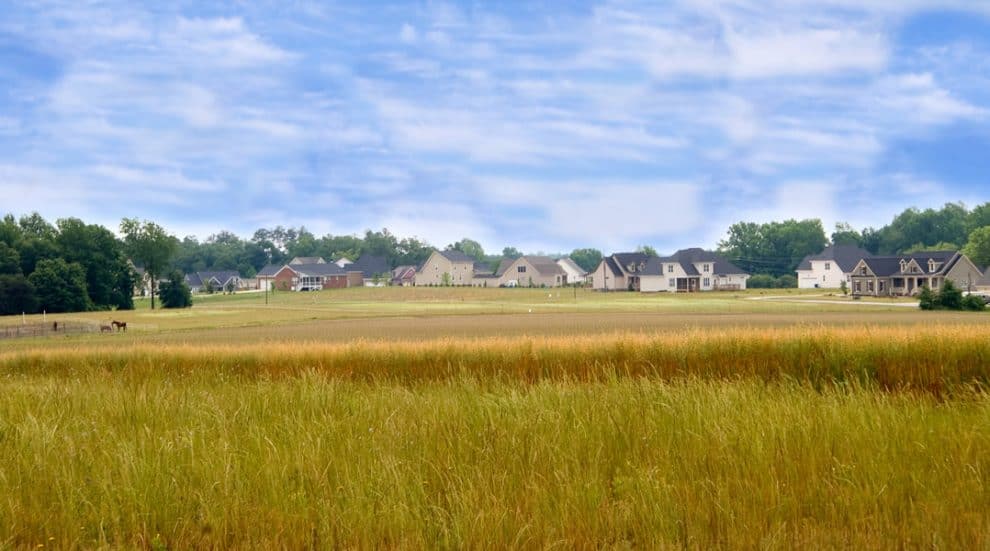The January LANDTHINK Pulse revealed 53.88% of respondents think that developers should be required to pay a farmland mitigation fee to recover or replace land converted to urban use. Farmland protection policy has become a high-profile issue in many counties across the U.S., since millions of acres of prime agricultural land continue to be lost to development. The intensifying urbanization of America and explosive population growth has led local governments to adopt policies that require developers to mitigate the conversion of farmland for projects that enhance the city, create additional tax base, and boost the economy.
According to the American Farmland Trust (AFT), between 2002-2007, 4,080,300 acres of farmland were converted to development uses, the AFT also indicate that every single state lost prime agricultural land. Taking measures to preserve America’s farmland is a prudent decision, as the future of the agricultural industry, the world’s food supply, and the economy are at risk. Policies requiring developers to pay a per-acre mitigation fee, purchase farmland somewhere else, or acquire a conservation easement on existing farmland in lieu of fees, have been imposed in many counties.
Surprisingly, 46.12% of those responding to our survey oppose mitigation fees, and many of them have some arguable points. Some feel that once highly productive farmland is gone, it’s gone for good; the loss is irreparable. Forcing a developer to purchase additional farmland or the placement of an easement won’t change the fact that it is gone. In addition, the fees are supposed to be based on current land values, but it’s rarely a rational amount to cover the cost per acre of mitigation for farmland. Farmland values remain too high for owners to be compelled to place an easement on their property for such a low per-acre fee.
Last month, the January Pulse asked: Should developers be required to pay a farmland mitigation fee to recover or replace land converted to urban use?
This turned out to be a relatively divided issue among our audience. Our informal online survey revealed that 53.88% of those responding said “YES”, indicating that developers should be required to pay a farmland mitigation fee to replace land converted urban use. Coming in a close second, 46.12% of our audience answered “NO”, developers SHOULD NOT be required to pay a farmland mitigation fee to replace land converted urban use.
Here are the final results:

- 53.88% said YES
- 46.12% said NO
Thank you to everyone who participated and shared the Pulse with friends and connections in the land industry.
LANDTHINK is seeking sponsors for the March LANDTHINK Pulse Question and months thereafter. Sponsorship of the Pulse during the busiest time of the year is a great way to ensure your brokerage is the first one buyers and sellers call when they have a real estate need. Leveraging our entire network of web and social media sites is a great way get your name out there during the buying season! Pulse sponsorships are offered on a first come first served basis and are subject to certain limitations. If your business would be interested in sponsoring next month’s March Pulse question, please contact us soon.
Do you have a suggestion for next month’s Pulse question? Submit your question here and we might choose yours!
What will happen to land real estate prices if commodity prices continue to decline?
This content may not be used or reproduced in any manner whatsoever, in part or in whole, without written permission of LANDTHINK. Use of this content without permission is a violation of federal copyright law. The articles, posts, comments, opinions and information provided by LANDTHINK are for informational and research purposes only and DOES NOT substitute or coincide with the advice of an attorney, accountant, real estate broker or any other licensed real estate professional. LANDTHINK strongly advises visitors and readers to seek their own professional guidance and advice related to buying, investing in or selling real estate.










Yes! Agreed 100%!
Making developers pay more for the land they want to put homes on only makes home prices go up and doesn’t save farmland. Illinois will not let a land owner sell anything less than 20 acres to keep farm land. Laws are in effect to prohibit subdivisions also and must be approved. However, we must realize cities are moving out into malls, plazas, etc. and many do not want to live on a small city lot anymore. The trend is small suburb areas and not huge cities. People want an acre or two for small gardens which amounts to small farmlands. Chickens are allowed in many areas. Housing is high enough so we shouldn’t punish developers to make it higher. Let’s ask them to put each house on at least 2 acres of land and encourage home owners to have their own little farm.